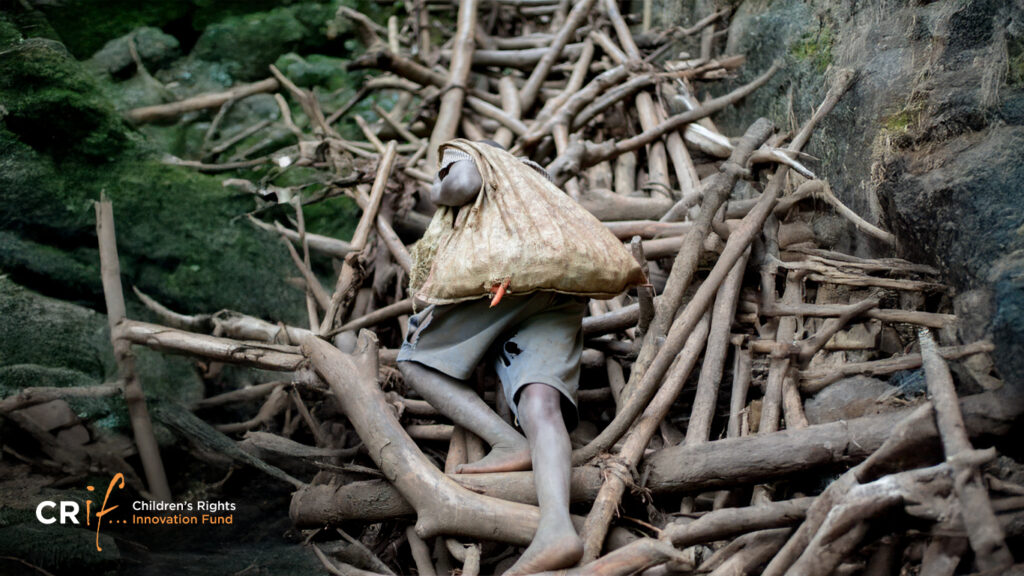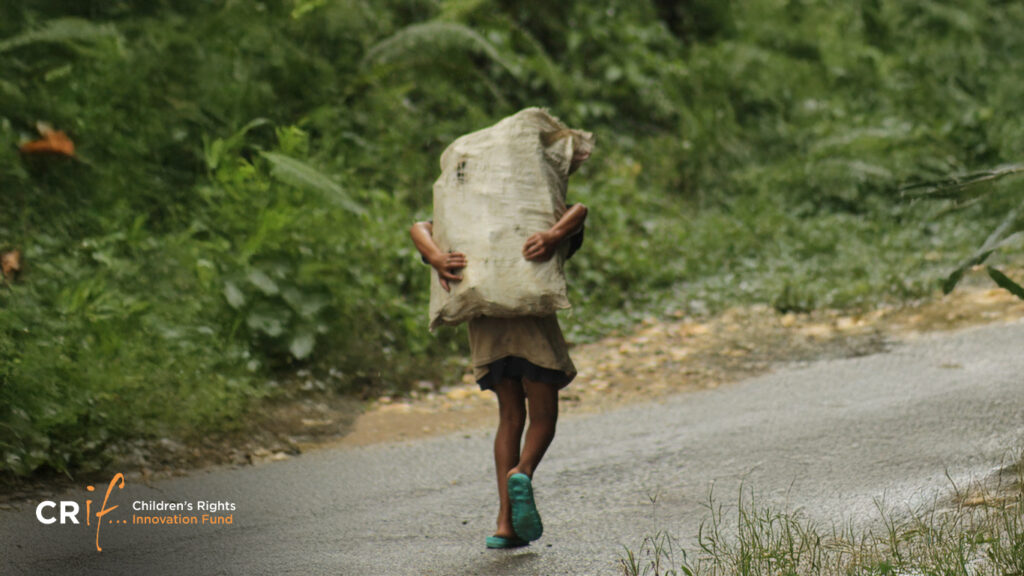25th March 2025
By: Mahouklo
Forced labor is any involuntary work or service imposed on a person under the threat of punishment, as defined by the ILO Convention 29 on Forced Labor (1930).
Since the adoption of SDG Target 8.7, the international community has pledged to eliminate child labor. Yet, this commitment faces growing challenges—climate change, political instability, armed conflicts, economic crises, and the aftermath of COVID-19—all of which have severely weakened child protection systems.

A child climbs a dangerous pile of sticks with a heavy sack on their back.
Governments’ efforts to curb inflation remain inadequate, particularly in developing countries, where the rising cost of living is pushing millions of children into desperate survival strategies. Basic social services are increasingly out of reach, forcing more children into labor.
“According to the ILO’s 2022 report, the number of child workers worldwide surged to 160 million, with Africa alone accounting for 86.6 million – a staggering 23.9% increase. These children, seeking a means to survive, are exploited in markets, construction sites, bus stations, fields, and even on lakes. They endure: Grueling and underpaid labor, Physical and verbal abuse, Withheld wages and broken promises, Dangerous conditions that threaten their health, safety, and future.”
Many developing countries, particularly in the Sahel region of West Africa, are grappling with security threats, food crises, and climate disasters. Families displaced by violence, droughts, and economic hardships often have no choice but to engage in forced labor just to survive. Children suffer the worst consequences, being trapped in hazardous work instead of classrooms.
Despite ILO Convention No. 138 on the Minimum Age for Employment and ILO Convention No. 182 on the Worst Forms of Child Labor (ratified by all member states), child exploitation remains rampant. The real challenge lies in implementation because laws alone are not enough.
Governments, civil society, and the international community must move beyond words and into real action. However, the ILO’s 2020 Global Estimates of Child Labor report outlines key interventions that can drive meaningful change:
Make social protection universal – Economic instability is one of the biggest drivers of child labor. Strengthening safety nets such as cash transfers, food assistance, and social security can help families stay afloat without resorting to child labor as a survival strategy.
Education must be a real alternative to work, not a privilege – Governments should align the minimum age for employment with the end of compulsory schooling, eliminate hidden costs that keep children out of school, and invest in quality education tailored to real-world needs.
Break gender norms and discrimination – Girls often carry the heaviest burden of unpaid labor at home, making them more vulnerable to exploitation when economic hardship strikes. Addressing gender inequality in household work and employment opportunities is critical.
Ensure birth registration – Without a legal identity, children are invisible in the eyes of the law, making them easy targets for exploitation. Governments must strengthen birth registration systems and ensure that every child has access to official documentation.
Strengthen child protection systems – Prevention must be at the heart of child labor policies. Governments need to allocate resources to enforce child labor laws, train inspectors, and establish reporting mechanisms that allow children and families to safely report exploitation.

A child walks along a road, struggling under the weight of a large sack.
Promote decent work and formal employment – Many families rely on informal, unstable jobs that offer little protection. Expanding access to formal employment, especially for young people and women, can help break the cycle of poverty and reduce the economic pressures that push children into labor.
Invest in rural livelihoods – Agriculture remains the largest sector for child labor, with 70% of all child labor worldwide—and up to 82% in sub-Saharan Africa—happening in this sector. Without investments in rural economies, children will continue to work in dangerous and exploitative conditions.
“At the heart of the fight against child labor are local activists, youth leaders, and grassroots organizations who work tirelessly to protect children. These organizations are often the first responders, providing direct support to families, raising awareness, and advocating for systemic change.”
But they cannot do it alone. CBOs need adequate funding, capacity building, and strategic partnerships to sustain their work. Donors and policymakers must prioritize long-term investments in grassroots initiatives that tackle child labor at its root—poverty, inequality, and lack of access to education.
The fight against forced child labor is not just about laws—it’s about action. It’s about dismantling the systems that keep children trapped in cycles of exploitation. It’s about ensuring that every child, no matter where they are born, has the right to a safe, healthy, and dignified future.
This is a crisis. It demands urgency. It demands action!
About the Author
At 25, Mahouklo is a Project Manager, child rights advocate, and trainer dedicated to amplifying the voices of vulnerable children and youth. With a strong commitment to participatory grantmaking, he actively champions youth-led decision-making in philanthropy.
A former decolonize! Collaborative Member, one of the young leaders shaping grant decisions at CRIF, Mahouklo now contributes to CRIF’s Constituency, a dynamic political hub where young activists connect, strategize, and drive change.

Read the article in French.